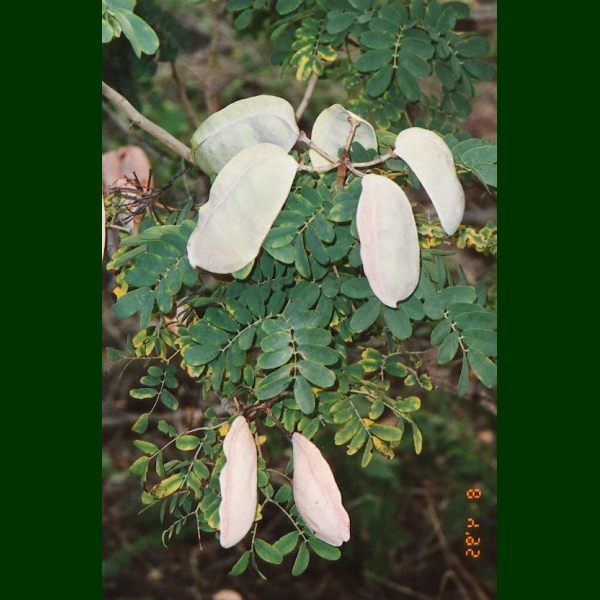 Hawaiian Name(s): uhiuhi, kāwa‘u (Maui), kea (Maui)
Hawaiian Name(s): uhiuhi, kāwa‘u (Maui), kea (Maui)Scientific Name: Caesalpinia kavaiensis
Vernacular Name: none
Family: Fabaceae
Status: endemic; endangered
Authority: H.Mann
Description: Shrubs or trees, 4-10 m tall.
Habitat Now rare in mesic or dry forest at Waimea Canyon, Kaua‘i; central leeward Wai‘anae Mountains, O‘ahu; Hualalai, Hawai‘i (Wagner et al. 1990:647–648).
Medicines: To purify the blood, combine and mash young leaves and leaf buds and bark of uhiuhi, along with the inner bark of hāpu‘u (Cibotium spp.), okolehao (usually of ki, Cordyline fruticosa), ‘ulu bark (Artocarpus altilis), ‘uhaloa tap roots (Waltheria indica) and sections of kō kea (white sugarcane, Saccharum officinarum). Strain mixture through ‘ahu‘awa (Cyperus javanicus) and drink three times a day (Chun 1994:249–250).
Non Medicinal Uses: Extremely hard wood used to make weapons (Abbott 1992:110–1110), ‘o‘o or digging stick (Krauss 1993:25), house posts (Kamakau 1976:96; Krauss 1993:56), kapa beaters (Kamakau 1976:109: Krauss 1993:63), la‘au kahi wauke or a board for scraping wauke to make kapa (Krauss 1993:610); sled runners (for holoa) (Culliney and Koebele199:136). Also for fish hooks (Kamakau 1976:77; Krauss 1993:43); octopus or fish spears (Kamakau 1976:70: Krauss 1993:34,45). In the Ethnology Collection at Bishop Museum there is a post-contact example of the wood made into a bowl.
Specific gravity of wood: unknown
Famous Locations:
Mele:
`Ōlelo Noeau:
Dye Color and Parts:
Kino lau:
Location on Bishop Museum Kalihi Campus:
Propagation Information: Difficult. Greenish/khaki colored seeds sprout fastest; scarify, seedlings grow quickly, don't keep in pot for long or roots become potbound; repot in high cinder content for good drainage; responds well to fertilizer; plant out early; do not overwater (Culliney and Koebele 1999:136–139).
Hawaiian Native Plant Propagation Database.
Native Plants Hawaii.
